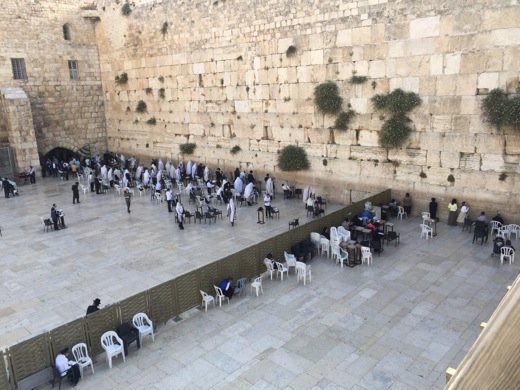
What a melancholy word – wailing! I know of only one architectural site in the world that’s described by that adjective. It’s the Western Wall of the Temple Mount within the Old City of Jerusalem. What is the Wailing Wall? Why is it so important? And why does it bear its sad name?
Nearly a thousand years before Christ, King Solomon built the First Jewish Temple on the threshing floor of Araunah the Jebusite (2 Chronicles 3:1) and the glory of the Lord filled it and there God dwelled among His people in a centralized and glorious way (2 Chronicles 5:13-14). The Most Holy Place within the Temple was the spiritual center of the world; at least until the nation of Judah became so rebellious and corrupt that the glory of the Lord departed as dramatically as He had come (See Ezekiel 9-11). Shortly thereafter, the Babylonians invaded the city and burned the Temple to the ground.
The Second Temple was built several decades later and the story is told in the book of Ezra. Then just before Jesus was born, Herod the Great “renovated” the Second Temple. He built huge retaining walls around the Temple area, made a 37-acre platform, and built the greatest building the world has ever seen, which is still referred to as the Second Temple. It was destroyed by the Romans in AD 70, and for nearly 2000 years the Jewish people have been exiled from their central place of worship.
Over the years and because of repeated destruction and war, the ground level of Jerusalem has risen, as buildings have been erected on top of the rubble of destroyed buildings, including those connected with Herod’s temple complex. For centuries, Jews were unwelcome to visit the area surrounding the ancient temple. Even after the nation of Israel was reestablished in 1948, Jordan controlled the area around the Temple Mount and the Jewish people were unable to approach their holiest site.
But in 1967, IDF forces led by Israeli Defense Minister Moshe Dayan took East Jerusalem, and for the first time since AD 70, the Jewish people could approach a portion of the Western retaining wall that Herod had built. Moshe Dayan left the Temple Mount itself in the keeping of the Muslims, but Jews now had access to the huge retaining wall on the western side of the mount.
The Wailing Wall is not an original wall of the actual Second Temple, for the stones of that glorious building were all thrown down as Jesus predicted in Matthew 24. The Western Wall is the upper part of the original retaining wall that Herod build to create the Temple Mount. Since the street level rose as one generation built upon the rubble of the previous generation, what is seen now at the Western Wall amounts to about the top third of the original wall. To see beneath the street level and the foundations of the wall, you have to take a tour of the Western Wall tunnels, which run beneath the Old City.
The Wailing Wall is about the closest a Jew can now get to the spot where the Temple once stood. As I said, Muslims guards still control the Temple Mount itself, which it is a sacred Islamic site. The presence of a Jewish man or woman could provoke a riot. It’s at the Wailing Wall the Jewish people come to mourn their past and pray for a Messianic future.
Today, not just the Jews but anyone who is respectful can approach the Wailing Wall. Many go there to pray, and the ancient stones are packed with small folded papers of written prayers brought from all over the world and stuffed into its cracks.
One day, according to biblical prophecy, the Third Temple will be erected on Temple Mount, triggering the events leading to the Return of Christ.
Here are some pictures I took recently of the Wailing Wall. If you’d like to join me on a future trip to Israel, we’re planning for a return visit next May 30 or so, 2016. Call our TDF office at 615-871-4769 and we’ll send you some information as soon as it’s published.









